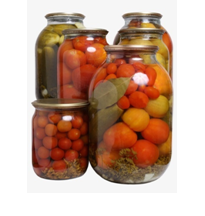Ultrasound Food Processing
In pre-historic ages, the competition of food urged the processing of food to preserve it for longer times. Nowadays, the processed foods that are flourishing in supermarkets are modern processed foods and traditional foods, but their manufacturing, processing and packaging technologies have been advanced and rationalized to an incomparable extent.

Nowadays, the emergence of ultrasound processing as green novel technology has also attracted the attention to its role in the environment sustainability. There are a large number of potential applications of high-intensity ultrasound in food processing. Some of the applications of ultrasound in the food industry include:
Microbial Inactivation
Sometimes, thermal treatments can lead to the development of off flavours and loss of nutrients. Ultrasound processing is an effective non-thermal alternative that can be used to inactivate micro-organisms and hence, increase the shelf life of the product. It can also be coupled with some of the thermal treatment to increase the lethal effect on micro-organisms.
De-aeration 
A liquid contains gases as a mixed condition, such as dissolved oxygen, carbon dioxide, and nitrogen gas. Degassing in an ultrasonic field is a highly visible phenomenon when ultrasound, e.g. an ultrasonic cleaning bath, is used with regular tap-water inside. Degassing with ultrasound is applied on carbonated drinks, beer (de-fobbing) and wine.
Cooking
In a study published in 1978, it was reported that sonication in cooking led to a homogeneous cooking of the food due to improved heat transfer in the medium. Also, the reduction of energy consumption is another outcome for ultrasound assisted cooking.
“Ultrasound treatment is a good opportunity to inactivate microorganisms and enzymes when combined with heat and pressure. This triple combination serves a successful inactivation process in lower temperatures which provides a solution for industry to obtain fresh-like foods.”
Freezing and crystallization
Cooling and/or freezing as a means of preservation of food has been used for hundreds of years through the use of natural ice or overwinter storage. One very important area related to freezing in the food industry is the formation of ice crystals during the freezing of water present in the food material. Under the influence of ultrasound, conventional cooling provides much more rapid and even seeding, which leads to a much shorter dwell time.

Brining, Pickling and Marinating
Brining, pickling and marinating are used for preservation of a wide variety of foods such as vegetables and meat. Sonication increases the transfer of salt and water in tissues so helps to reduce the pickling time and provides a uniformly salted product.
A research study reported the effects of ultrasound on mass transfer during cheese brining. The rate of water removal and sodium chloride gain increased when ultrasound was applied in comparison with bringing performed under static or dynamic conditions, suggesting that ultrasound improves both external and internal mass transfer.

Drying
Sonication treatment permits the application of lower temperatures than conventional methodology in a drying process. Heat sensitive foods, such as milk powder, may be dried with the ultrasound-assisted drying applications to avoid alterations of flavour, colour and nutritional values.
Ultrasound vibrating separator is used many food processers to solve sieving difficulties such as high adsorption & easy cluttering.

